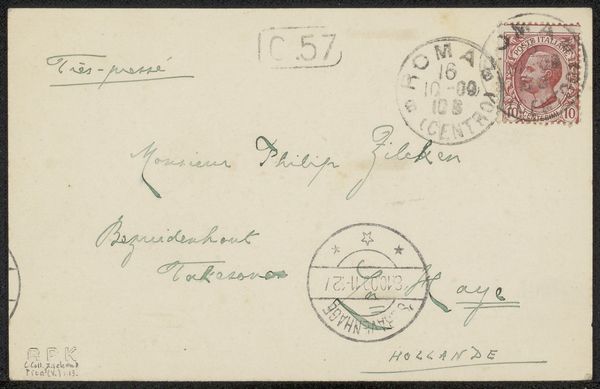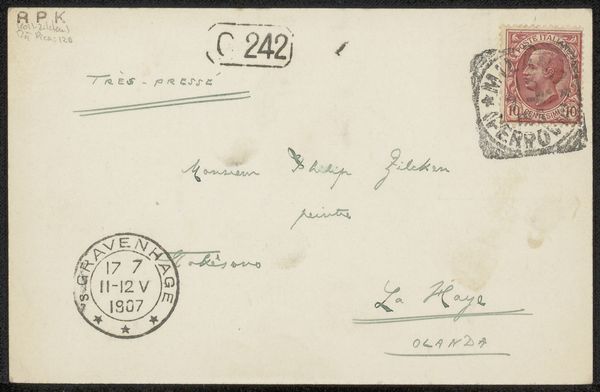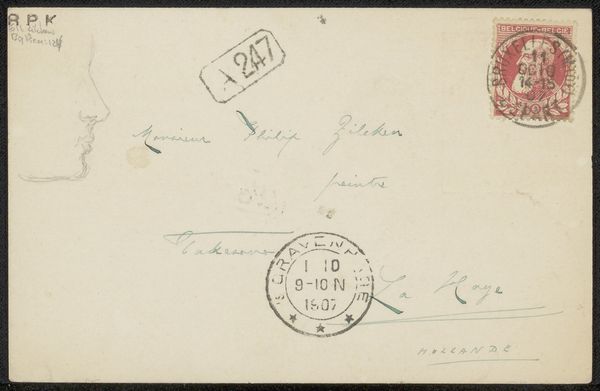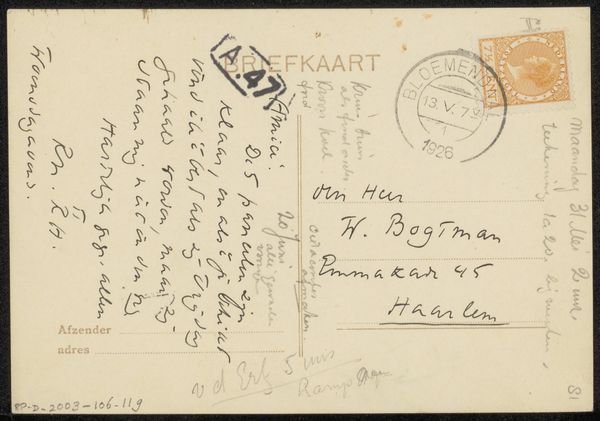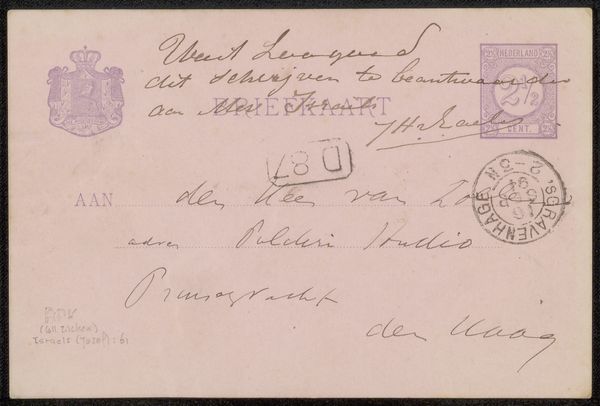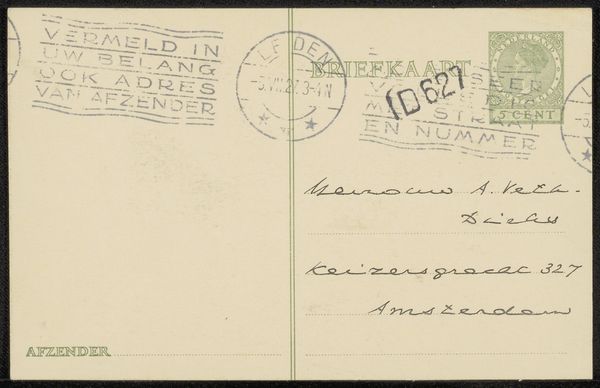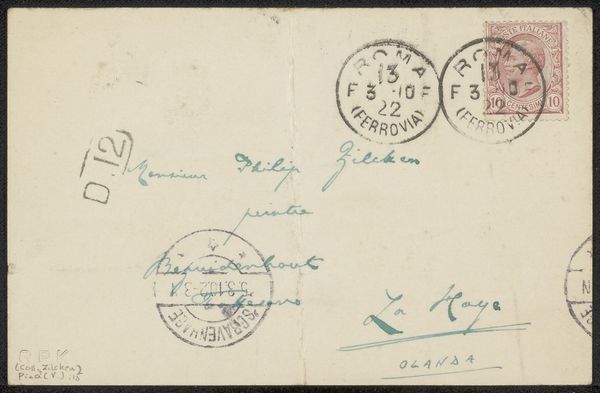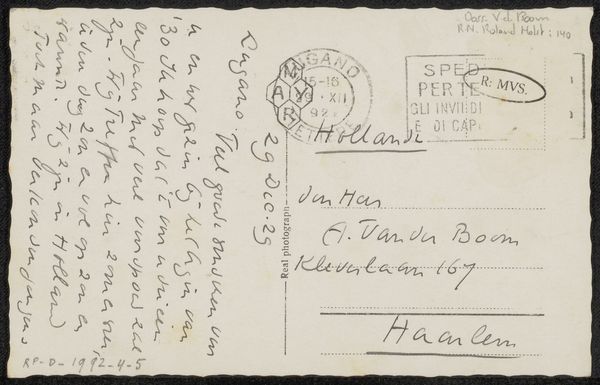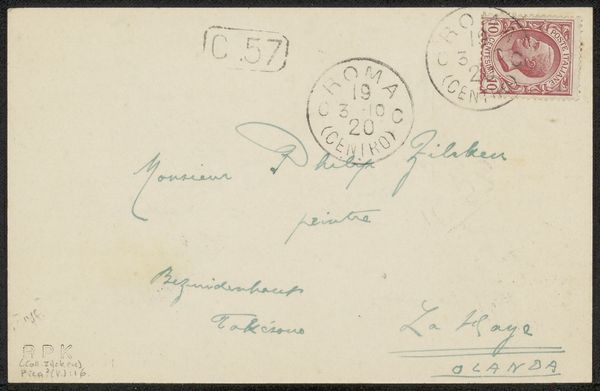
drawing, paper, ink
#
drawing
#
comic strip sketch
#
pen sketch
#
old engraving style
#
hand drawn type
#
paper
#
personal sketchbook
#
ink
#
pen-ink sketch
#
pen work
#
sketchbook drawing
#
storyboard and sketchbook work
#
sketchbook art
#
calligraphy
Copyright: Rijks Museum: Open Domain
Editor: This is "Prentbriefkaart aan Philip Zilcken," which translates to "Postcard to Philip Zilcken." It's marked as possibly being from 1923, and it seems to be ink drawing on paper. The writing is quite stylized. It’s unlike anything I've seen before. How would you approach understanding something like this? Curator: Well, consider this postcard as a historical artifact, beyond its immediate artistic value. It reflects the socio-political landscape of its time through its postal markings, the language used, and the implied relationship between sender and receiver. Can you see evidence of that landscape? Editor: I do see a French postage stamp, so I presume that it was at least in France in 1923. And now that I'm reading it more closely, the top reads: "PARTIE EXCLUSIVEMENT RESERVÉE A LA CORRESPONDANCE"... so that the other side (where a picture could go) should remain untouched? Was there something going on that required this restriction? Curator: Precisely! Regulations around correspondence offer insight into social control, censorship, and even anxieties around privacy. Now, think about the act of sending a postcard itself. Who would send a postcard then, and to whom? Editor: Perhaps someone well-to-do who had the resources to travel... sending a note to someone of similar social standing? A leisure class perhaps? And maybe handwriting like this implies education and status? Curator: Indeed! The visual style of the writing, almost calligraphic, underscores this sense of a cultured elite. By examining such ‘ephemera,’ we understand art as embedded in specific social relations, conveying both overt and covert messages. This isn't simply about personal communication. What would it have meant to exchange handwritten messages in 1923 versus a telephone call or email? Editor: It highlights how much slower everything was then and how tangible and permanent messages could be. It's easy to take that for granted today. So this postcard shows both individual intent and broad historical trends at the same time. Curator: Exactly. By situating the postcard within these frameworks, we grasp its complexities and its engagement with the larger world.
Comments
No comments
Be the first to comment and join the conversation on the ultimate creative platform.


